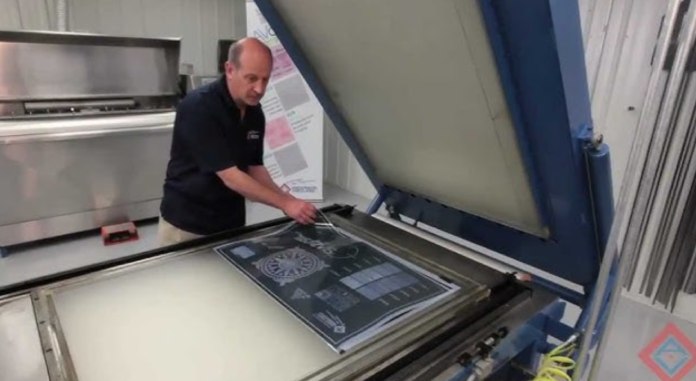Flexographic printing, commonly known as flexo printing, is one of the most widely utilized strategies in the name printing industry due to its combination of quality, efficiency, and flexibility. At the heart of this printing handle is a series of essential components that work together to exchange ink onto the substrate. One of these basic components is the wellspring roller. Understanding the part of the wellspring roller in a flexo printing station gives insight into the complexities of this progressed printing strategy.
Sometime recently digging into the specifics of the wellspring roller, it’s vital to have a basic understanding of how flexo printing works. Flexo printing includes a rotating preparation where ink is transferred from the ink supply to the substrate through a grouping of rollers and barrels. Most components of a flexo printing plate suppliers: The Fountain Roller picks up ink from the ink plate, Anilox Roller, exchanges ink from the wellspring roller to the printing plate. The plate Barrel holds the printing plate and gets ink from the anilox roller. Impression Barrel presses the substrate against the inked printing plate to exchange the picture.
Function and Significance of the Fountain Roller
The fountain roller plays an urgent part as the beginning point of ink exchange within the flexographic printing handle. Its primary functions include:
Ink Collection
The fountain roller dips into the ink plate to gather ink. This activity is significant because it guarantees a steady supply of ink to the consequent rollers. The roller is designed to choose up a fitting sum of ink from the supply, which is vital for maintaining the quality of the print. The fabric and surface plan of the wellspring roller are optimized to encourage this pick-up, guaranteeing that the proper volume of ink is exchanged each time.
Ink Transfer to the Anilox Roller
After collecting ink from the plate, the fountain roller exchanges it with the anilox roller. This exchange is encouraged by the contact between the two rollers, which permits the ink to move from the fountain roller’s surface to the anilox roller’s engraved cells. This step is basic for guaranteeing that the right sum of ink is conveyed to the printing plate. The anilox roller features a finely engraved surface that holds a particular sum of ink in its cells.
Consistency and Control
One of the basic perspectives of the fountain roller work is its capacity to supply a reliable ink stream. In flexographic printing, consistency in ink application is significant for accomplishing high-quality prints. The fountain roller guarantees that the anilox roller gets a uniform layer of ink, which is at that point exchanged to the printing plate. This consistency makes a difference in maintaining indeed color conveyance and avoiding print absconds such as streaks or patches.
Regulating Ink Consistency
The fountain roller also helps in keeping up the right ink thickness by persistently moving the ink. This development prevents the ink from settling or thickening, which can influence the quality of the print. Appropriate consistency is basic for the ink to stream easily and follow accurately to the substrate. By keeping the ink in movement, the wellspring roller guarantees that it remains at an ideal thickness, anticipating issues such as clogging or uneven application.
Detailed Parts and Components
The fountain roller is an integral portion of the flexo printing handle, acting as the essential contact point for ink collection and exchange. Its effective working is significant for the by and large quality and consistency of the printing preparation. Below are more nitty gritty perspectives of its parts and components:
Material and Design
The material utilized for the fountain roller is ordinarily chosen for its toughness and resistance to the chemicals within the inks. Common materials incorporate elastic, polyurethane, and certain metals, each chosen based on the sort of ink and the particular printing prerequisites.
Synchronization with Anilox Roller
The fountain roller must work in culminating synchronization with the anilox roller. This coordination is significant since speeds or alignment can lead to uneven ink dispersion. Progressed printing stations frequently use precise control frameworks to preserve this synchronization, guaranteeing that the ink exchange is smooth and reliable.
Maintenance and Cleaning
Standard support of the fountain roller is basic to avoid ink buildup and wear. Cleaning the roller regularly makes a difference in maintaining its effectiveness and drawing out its life expectancy. Maintenance schedules may incorporate checking for surface wear, guaranteeing proper alignment, and confirming that the rollerâ’s surface remains smooth and free from defects that could influence ink exchange.
Advances in Fountain Roller Technology
Mechanical headways have driven advancements within the plan and usefulness of fountain rollers. Innovations such as mechanized cleaning frameworks made strides in materials, and accuracy designing have upgraded the execution of these rollers.
Conclusion
The fountain rollers part in flexographic printing is basic for guaranteeing steady, high-quality prints. Its capacities of ink collection, exchange to the anilox roller, maintaining consistency and control, and controlling ink thickness are principal to the printing preparation.











